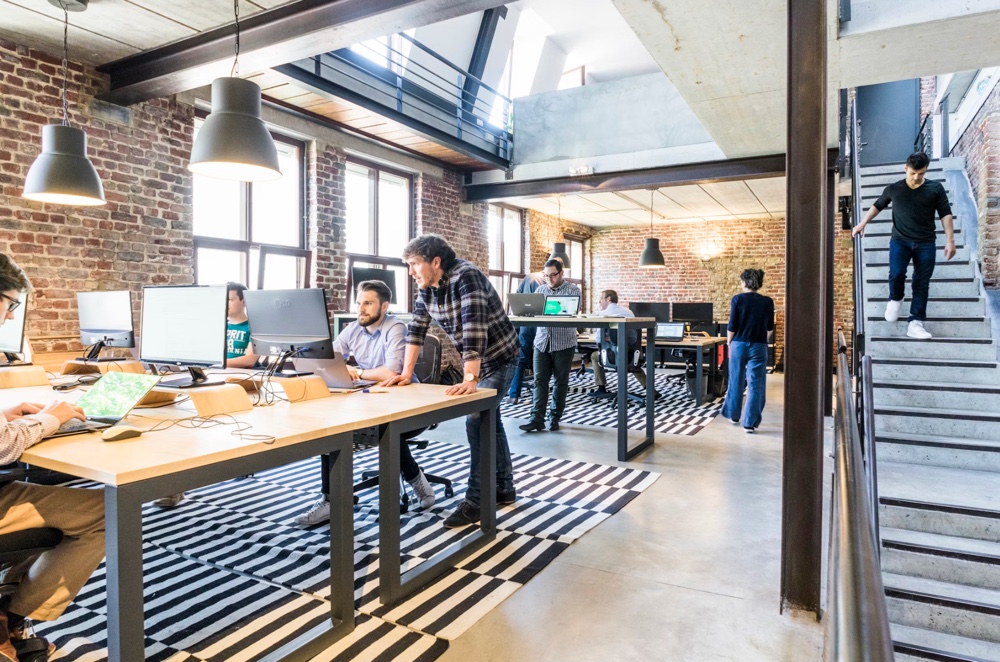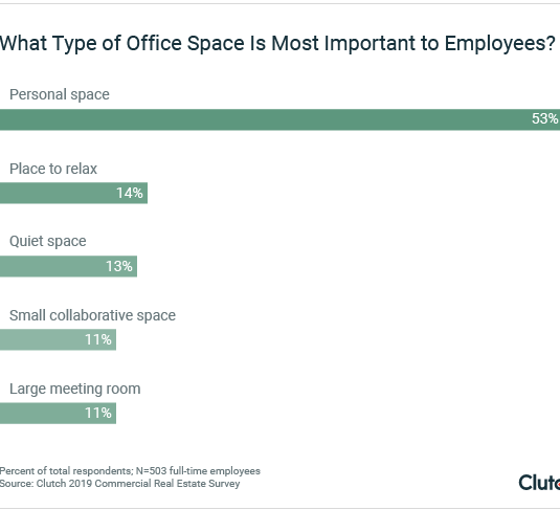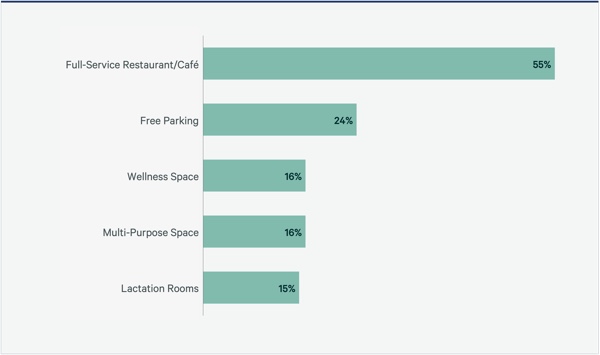
Forget trends. Forget mandates. Forget whether people are coming in two days or four.
The real question we should be asking is:
What do employees need from their workplace to feel supported, productive, and excited to do their best work?
Because that’s what great workplace experience is about. Not policy. Not compliance. Experience.
In 2025, employees are showing us what matters: spaces that give them control. Tech that doesn’t fight back. Layouts that reflect how people work, not how space used to be managed.
This article breaks down what employees say they want and what workplace experience teams can do to deliver it. We’re not here to talk about hybrid strategies or how many desks you need. We’re here to talk about people. And how to build places that work for them.
Let’s dig in.
1. Flexibility is non-negotiable
Let’s start with what everyone’s already feeling: rigid offices just don’t work anymore. A
CBRE study found that
52% of employees want a workplace that gives them options—spaces where they can choose how and where they work based on the task at hand.

This means more than just throwing a few beanbags in the corner. We’re talking:
- Quiet rooms for deep focus
- Social zones for spontaneous convos
- Collaboration spaces for heads-together work
- Private call pods for, well, privacy
Over
65% of companies are already reducing desk density and shifting to activity-based layouts to reflect this reality. Employees want autonomy. The workplace has to support it.
2. People want their personal space
Yes, hot desking is here to stay. (*but only in specific use cases*, read
this article about the use case of hot desking) But employees haven’t given up on having a space that feels like their own.
53% say their personal workspace is the most important part of the office.
Open plans? They’re not the productivity boosters we hoped for.
Harvard research showed that
face-to-face interaction dropped
70% when offices removed walls. That’s not exactly collaboration.
Still a believer in open office spaces? Check out
this article about the state of the Open Office Layout
The best offices balance open and private. That might mean reservable desks, quiet pods, or just knowing you can count on a space being yours when you need it. Nearly
98% of employees still have an assigned spot, which tells you something about what they value.
“Great workplaces are intentionally designed to evoke feelings in a space by overlaying experience factors with space function. The most important experience factors that promote workplaces from good to great include feeling that the space is beautiful, welcoming, and inspires new thinking.”
3. Amenities are a deal-maker
Office amenities are the little things that transform a regular workplace into an exceptional one. They are thoughtful extras that elevate working conditions beyond contractual job requirements.

You don’t need to turn your office into a wellness resort. But the basics have to be there. Think:
Natural light and LED lights (no one likes those fluorescent lights in the office)
- Comfortable seating
- Clean air
- Quiet Zones
- Fully stocked kitchens
- Multi-purpose spaces
According to
JLL,
75% of companies now prioritise amenities like on-site gyms, cafés, and green spaces when selecting office space. And for good reason. These perks are signals.
Signals that say: we care about your well-being, not just your output.
And yes,
social spaces matter too.
Gensler found that
80% of employees report that social zones enhance their satisfaction. A good office gives people room to connect. Sometimes the best ideas happen near the coffee machine or in the office lounge.
“The best offices know how to be comfortable and convenient enough where it encourages employees to be in the office during the workday rather than wanting to be at home doing work”
- Max Fal, Fueled
4. Tech that does what it says it does
Employees won’t battle broken booking systems. They won’t fight for a desk, troubleshoot a touchscreen or a print machine. Over
40% of hybrid workers avoid the office because the tech experience is bad, according to
Gartner.
Now that we’ve established their space needs, those spaces need to be linked with the right workplace tech for people to enjoy their time in the office.
Here’s how we’d pair the tech to the spaces employees value most:
- Quiet Zones – Spaces for deep work need minimal distractions and clear boundaries. Think noise-cancellation tech, sound masking systems, and ambient light controls to set the tone for focus. Install red/green status lights outside the zone to signal availability without anyone needing to knock. Pair that with desk-level indicators, devices that let others know when a workstation is taken. Add adjustable lighting and smart air quality monitors to keep comfort levels. Add in soft seating or height-adjustable desks to help employees drop into a state of flow without interruption.
- Collaborative Areas – These zones benefit from large whiteboards, wireless screen-sharing tools and real-time room booking displays from Door Tablet to signal who’s booked the space and for how long.
- Meeting Rooms – For both face-to-face and virtual meetings, tech should be seamless. The meeting prep starts before the actual meeting. It starts with booking a meeting room. We've all had that moment—you thought you booked the room, but it turns out you didn’t. Someone else is already inside, and now you're scrambling five minutes before your meeting. What if the meeting room booking worked every time? Door Tablet’s meeting room displays, integrated with Microsoft 365 and Google Workspace, show real-time room status, support instant booking with a tap, and even auto-release rooms if no one checks in. That means no more double bookings, no calendar syncing issues, and no standing awkwardly outside an occupied room.
- Desks – Whether it’s hot desking or reserved seating, employees want their desk setup to feel smooth and personal. Door Tablet’s desk devices and desk booking software offer a real-time visual of which desks are booked and which are available, so finding a desk doesn’t feel like a scavenger hunt. Once there, the desk setup should just work: think dual monitors, ergonomic chairs, mechanical keyboard and mouse setups ready to go, plus clean desk policies that keep everything reset and tidy for the next user. Layer in adjustable lighting, accessories like wrist rests, a visual timer with an alarm or plants, and suddenly the desk becomes a workstation employees enjoy using.
According to
IWG,
95% of CEOs have invested in new workplace technology over the past year to support hybrid work. Employees don’t want five apps to manage one task in the office, like booking a desk or a meeting room. They want one system that gets out of the way and lets them get on with it.
The best tech is there for your employees. It should remove friction, not add to it.
5. Culture you can feel
It’s hard to measure culture, but your office tells the story for you.
From the layout of your meeting rooms to the quality of your chairs, employees read between the lines. When culture is truly embedded in space, it doesn’t need a poster to explain it. It shows up in quiet zones that respect people’s focus. In collaboration spaces that spark fresh thinking. In every amenity that says, “your time matters here.”
In
Gensler’s 2024 report, employees said the best workplaces felt
"beautiful, welcoming, and inspired new thinking." That’s not aesthetic for aesthetic’s sake, that’s culture expressed through design.
When companies make thoughtful space choices like offering personal desks instead of forcing hot-desking, or making sure meeting room tech works, employees notice. Those choices say: “We see you. We trust you. We built this for you.”
McKinsey estimates a median-sized company could lose up to
£280 million a year in disengagement and attrition. That’s what happens when people don’t feel connected.
So if you want your culture to feel real—not performative—it should be present in every centimetre of your workplace.
So what now?
If you're in HR, Culture, Ops, or Facilities, this is your moment to shape a workplace experience that reflects how people really work.
A thoughtful workplace supports different needs: quiet zones for deep focus, tools that don’t get in the way, and a layout that feels purposeful. Employees notice the details: the working tech, the lighting, the desk setup. These decisions send a message that their time and work matter.
When the space works, people do too. And when they feel supported, they’re more likely to stay, contribute, and be proud of the place they work in.